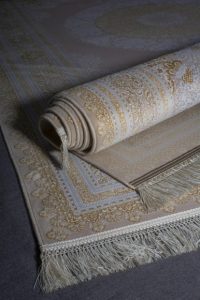Choosing the right carpet padding is essential for maximizing the comfort and durability of your flooring. Carpet padding, also known as underlay, serves as a cushion between your carpet and the subfloor. It not only adds a layer of softness for a more comfortable walking experience but also helps to extend the life of your carpet by reducing wear and tear. In this guide, we will explore the different types of carpet padding available and provide tips on how to select the perfect padding to suit your needs and enhance the overall performance of your flooring.
Types of Carpet Padding
There are several types of carpet padding to choose from, each with its own unique characteristics and benefits. The folks at SCV Floorsmith note that the most common types include foam, rubber, and fiber. Foam padding, available in both prime and memory foam options, is popular for its softness and insulation properties. Rubber padding, often referred to as waffle or flat rubber, is known for its durability and noise-reduction capabilities. Fiber padding, typically made from recycled materials, is appreciated for its eco-friendliness and stability.
When selecting the type of padding, consider the specific needs of your space. High-traffic areas, such as hallways and living rooms, might benefit from the resilience of rubber padding. Foam padding can be ideal for bedrooms where comfort is key. Fiber padding, on the other hand, is a good choice for environmentally conscious homeowners who also seek stability for their carpets.
Benefits of Proper Carpet Padding
Investing in high-quality carpet padding offers several benefits that go beyond comfort. One of the primary advantages is the extended lifespan of your carpet. The padding absorbs the impact of foot traffic, reducing the stress on the carpet fibers and preventing premature wear and tear. This support can save you money in the long run by delaying the need for carpet replacement.
Carpet padding contributes to better indoor air quality. By providing a barrier between the carpet and subfloor, padding helps protect against mold and mildew development that can occur from trapped moisture. This barrier also assists in noise reduction, making your home quieter by dampening the sound of footsteps and other impacts.
Considerations for Thickness
Carpet padding comes in various thickness levels, typically ranging from 1/4 inch to 1/2 inch. The thickness you choose will depend on numerous factors, including the type of carpet and the room’s intended use. Thicker padding generally offers more comfort but may not be ideal for all carpet types. For example, low-pile carpets may not perform well with very thick padding as it can cause the carpet to stretch and wrinkle.
Thinner padding might be preferable for certain applications, such as in high-traffic areas where firm support is necessary. It’s important to balance thickness with density. A dense yet moderately thick padding can provide both comfort and durability, making it a versatile choice for many households.
Carpet Padding and Energy Efficiency
Carpet padding plays a crucial role in enhancing your home’s energy efficiency. It acts as an additional layer of insulation, helping to keep your home warm during the winter and cool during the summer. This insulation effect can lead to lower energy bills, as your heating and cooling systems do not have to work as hard to maintain a comfortable indoor temperature.
In rooms where you aim to improve energy efficiency, opting for padding with high thermal resistance, also known as R-value, can be beneficial. This type of padding is designed to minimize heat loss through the floor, making it an eco-friendly option for energy-conscious homeowners.
Allergy Considerations
If you or someone in your household suffers from allergies, selecting the right carpet padding can make a significant difference. Some padding materials are treated with antimicrobial agents to inhibit the growth of bacteria, mold, and mildew, which are common allergens. Foam padding, particularly memory foam, often comes with these treatments, making it a good option for allergy sufferers.
Low-VOC (volatile organic compounds) padding options are available on the market. These paddings are designed to emit fewer chemical pollutants, thereby improving indoor air quality. When shopping for carpet padding, look for certifications like Green Label Plus to ensure you are choosing a product that promotes a healthier home environment.

Installation Tips
Proper installation of carpet padding is just as important as selecting the right type and thickness. Ensuring that the padding is securely attached to the subfloor can prevent shifting and bunching, which could lead to uncomfortable lumps under the carpet. Using quality adhesives and staples can help achieve a stable and durable installation.
It’s also crucial to allow the padding to acclimate to the room’s temperature and humidity before installation. This process helps avoid expansion and contraction issues that could affect the carpet’s appearance and performance. Hiring a professional installer can provide peace of mind, as they have the expertise to ensure the padding and carpet are installed correctly, providing lasting benefits.
Selecting the right carpet padding is essential for enhancing your flooring’s comfort, durability, and overall performance. Consider factors such as type, thickness, energy efficiency, and allergy considerations to find the perfect padding that will elevate your home’s interior design and provide long-term benefits.

